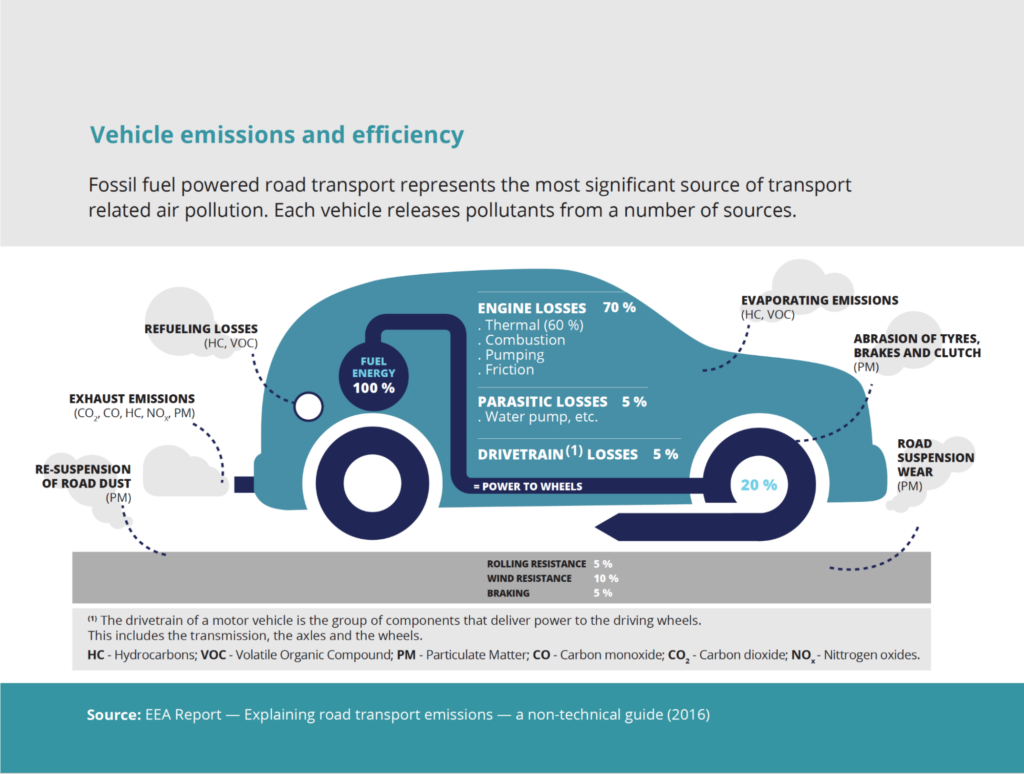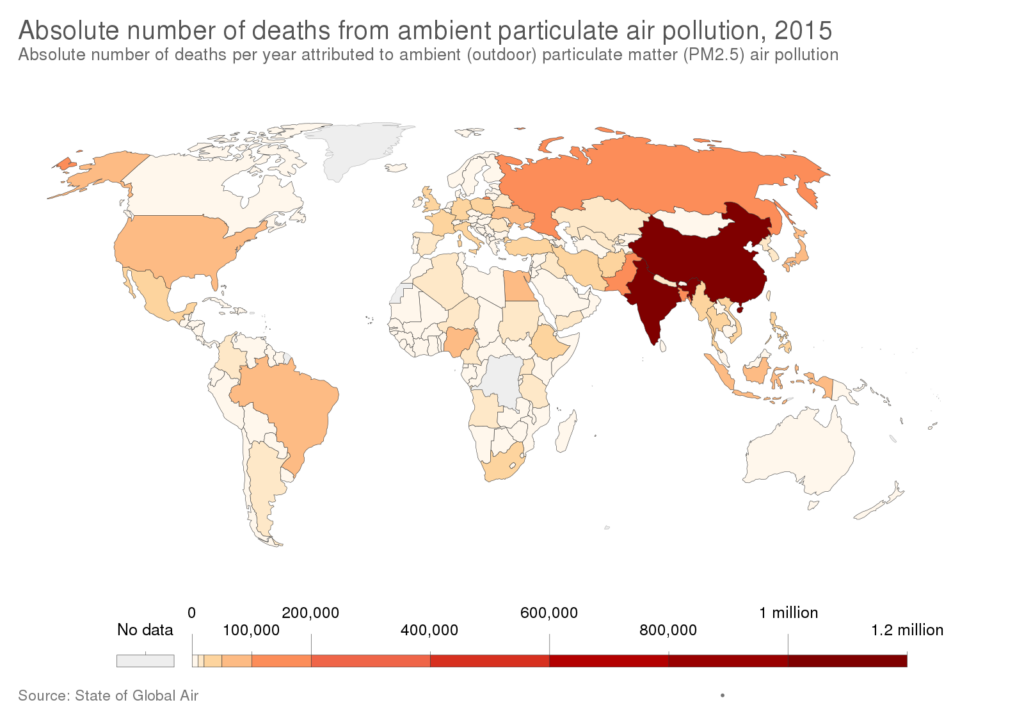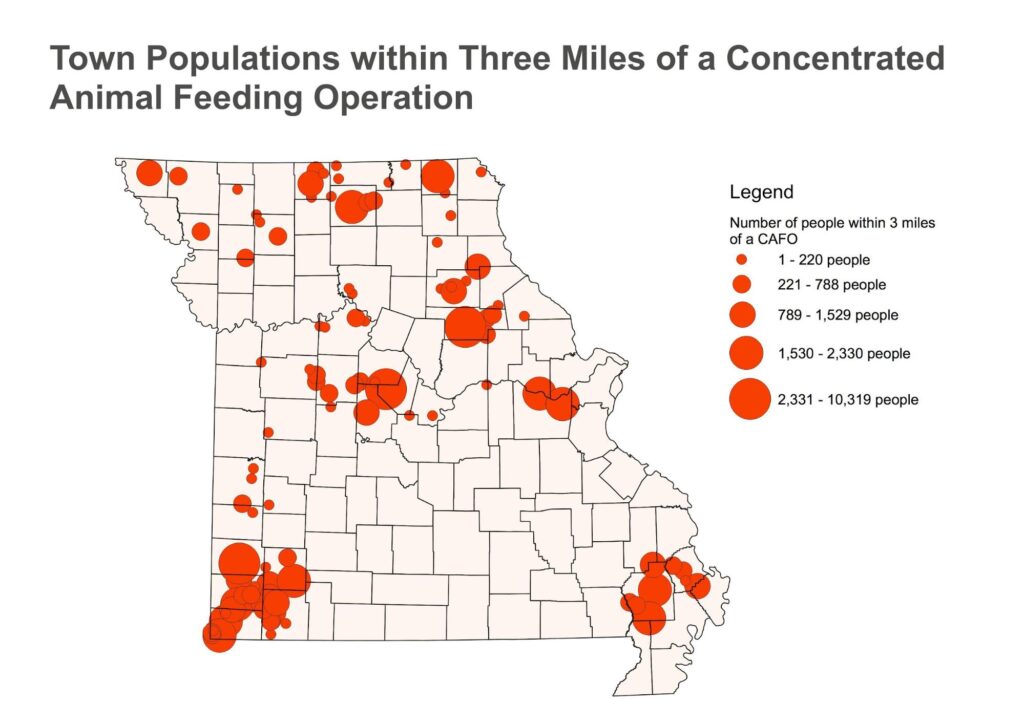Is Your Air Safe?
All throughout the world, air quality is getting worse every day.
There are countless pollutants being emitted into the air by humans every single day in various ways, such as transportation, manufacturing, waste, and more. The extent to which we pollute has been too large and has been negatively affecting the environment, as well as our own health.
The EPA only regulates five of the pollutants emitted under the Clean Air Act called “criteria pollutants” – ground-level ozone, particulate matter (PM 2.5 and PM 10), carbon monoxide, sulfur dioxide, and nitrogen dioxide. However, more than just these five pollutants are being emitted by countless sources and are problems that we have to face.
These particles infiltrate the air and cause pollution that harms the people that breathe it in, causing health issues such as respiratory problems, heart problems, or in extreme cases – death. Additionally, according to the Minnesota Pollution Control Agency, the particles can be carried long distances by the wind and land on waterbodies or ground. This can cause streams and lakes to become acidic, as well as change the nutrients of coastal waters and big river basins. Air pollutants deplete nutrients in the ground, destroy forests and farm crops, damage diversity in many ecosystems, and can cause acid rain. Learn more about the damage that air pollution can do to humans as well as the environment on the EPA’s website.
A majority of the source of this damaging pollution in the state of Missouri comes from concentrated animal feeding operations (CAFOs). The USDA defines CAFOs as animal operations where over 1,000 animal units are confined for over 45 days a year. CAFOs have proliferated throughout much of the United States, raising thousands to tens of thousands of animals in order to produce large amounts of animal products such as milk, meat, and eggs. However, there are many problems with CAFOs.

CAFOs generate a large amount of waste and that waste emits air pollutants. CAFOs in Missouri generate an average of 42 tons of manure per year. The EPA describes how this waste is usually transported into large waste lagoons that hold tons of manure until the CAFO operator applies the manure onto their cropland or transports/sells the manure to farmers to use as fertilizer on other farmland. Over 168 gases are emitted from CAFO wastes, and it can carry disease-bacteria, fungus, and other pathogens. According to the Sierra Club, CAFOs can cause pollution to enter the air through many sources such as the buildings where the animals are housed, waste lagoons, transport of waste, and the farming practices. You can learn more details about CAFOs on MCE’s website.
All of this pollution causes many problems in Missouri as well as the rest of the United States. Below you can find more facts about the six largest pollutants created by the CAFOs and other popular sources, like vehicles.
What is it?
PM1 are various very small particles of different pollutants, such as dust, bacteria, and viruses are all example of PM1. What makes PM1 different from PM2.5 or PM10 is the size. PM1 is the smallest of the three groups with it being all particles with a diameter of fewer than 1 microns (microscopically small). Unfortunately, unlike PM2.5, PM1 is not regulated by the government and any sort of monitoring for it is limited.
Learn more about PM1 and its effects at IQAir’s website.
What are the health impacts of exposure?
APFRO describes how PM1 particles are so small that after being breathed in, they are able to penetrate the lungs and enter the bloodstream. Then, it goes throughout the body and can systematically cause health effects. Additionally, PM1, along with PM2.5 and PM10, is known for causing health issues in the lungs and heart, as well as worsening existing medical conditions such as asthma and heart disease. A study done by News Medical demonstrates all of these impacts as well as how PM1 would be different from PM2.5. All of these problems have cause many unfortunate deaths throughout recent years, as shown below.

What are the main sources of PM1 pollution in Missouri?
As explained by the EPA, a majority of the pollution of PM1 in the air is due to fuel combustion, industrial waste/activity, tire particles, and wildfire smoke. Due to the main source of PM1 pollution being human sources, densely populated areas, especially with busy roads, are large influences of pollution. Since Missouri has a relatively large industrial sector, as well as many large cities, it has many sources of PM1 pollution.
Tips for reducing pollution from IQAir
- Commute by walking, bicycling, or taking public transportation
- Stop using gas-powered cars in order to reduce carbon emissions
- Use solar power as an energy source instead of other polluting sources of energy
- Reduce indoor combustion sources, like fireplaces, candles, ovens, and stoves
- Stop smoking cigarettes, vapes, or cigars
Who is monitoring for this and where can you learn more?
- List of monitoring sites for all pollutants throughout Missouri on DNR’s website
- MCU’s air quality index for St. Louis
- Air quality index for all of Missouri
- Some information regarding PM1, PM2.5, and PM10 on Airthings website
What is it?
PM2.5 are small particles in the air that, if dense enough, can reduce visibility and make the horizon appear hazy, as explained by Undark. Similar to PM1, PM 2.5 refers to particles that are two and one half microns or less in diameter, or about thirty times smaller than the size of a human hair. On days where there is little or no wind, then PM2.5 levels are elevated in certain areas and can cause concern.
The WHO has created healthy guidelines for PM2.5 exposure and quality.
What are the health impacts of exposure?
Even though they are not as small as PM1, PM2.5 particles are still small enough to go into the respiratory track and end up in the lungs. Long term exposure to these pollutants can cause worsening heart and lung function as well as increase the risk for heart attacks, as mentioned by BlissAir. Children, older adults, and people with heart and breathing problems are at an increased risk to the effects of long-term PM2.5 exposure.

What are the major sources of PM2.5 pollution in Missouri?
The largest source of PM2.5 pollution is vehicle exhaust and pollutants emitted from power plants, according to Molekule. However, PM2.5 can also come from indoor sources such as tobacco smoke, cooking emissions, burning candles, and fireplaces (EPA). Due to this, a major concern of PM2.5 pollution is the fact that staying inside during days of high pollution outside can also be dangerous if indoor sources of PM2.5 are present.
Explore more information about PM2.5 as well as what to do in situations of high exposure at the government of New York’s website.
How can you reduce exposure according to AirNow?
- On days where outdoor pollution is extremely high, staying indoors can be beneficial (although be aware of inside pollutant sources)
- Limit activities that are considered sources of pollution
- Avoid strenuous activity in areas where pollution is high
Who is monitoring for this and where can you learn more?
- EPA’s trends of PM2.5 in the past years
- DNR’s air quality index for Kansas City, St. Louis, and Springfield
What is it?
Similarly to PM1 and PM2.5, PM10 are various particles of pollutants that spread throughout the air from many different sources. The size of these particles are also reflected in its name and are the largest of the PM particles, with the pollutants being 10 microns or less in diameter, as defined by the California Air Resource Board. These pollutants can be released directly from the sources, which is called primary particles, or can be formed in the atmosphere from chemical reactions with gases, which is called secondary particles.
More information about PM10 can be found at EPA Victoria’s website.
What are the health impacts of exposure?
According to NSW Health, PM10 particles are small enough to infiltrate the lungs and throat. High enough density of PM10 particles in the air can cause coughing, stinging eyes, wheezing, chest tightness, and difficulty breathing. Additionally, similar to PM1 and PM2.5, long-term exposure is associated with an increased risk of heart attacks, chronic or acute bronchitis, asthma attacks, and other respiratory issues (IQAir).

What are the major sources of PM10 pollution in Missouri?
PM10 has many different sources of pollution that can occur. Some of these sources include dust, smoke from fires, vehicle exhausts, and industrial factories (Utah Department of Environmental Quality). As mentioned before, many of these particles also form due to chemical reactions in the atmosphere with gases such as sulfur dioxide (SO2), nitrogen oxides (NOx), and some organic compounds. These reactions cause microscopic liquid or solid particles that gather in the atmosphere.
How can you reduce exposure?
If PM10 particle levels in the air are high some suggestions are:
- Try to avoid going outside for long periods of time
- Close windows and doors
- If you have a pre-existing medical condition like asthma or a heart condition, follow the treatment/action plan
DNR’s website has further data concerning PM10 and its effects.
Who is monitoring for this and where can you learn more?
- See links for both PM1 and PM2.5
- EPA’s trends from recent years
- Data on monitoring sites across the United States on the EPA’s website
What is it?
Ammonia is a highly reactive and soluble gas that is colorless with a strong, fish-like smell. Once emitted, it only stays in the atmosphere for a few hours, as mentioned by the New York Department of Health. However, once in the atmosphere, it reacts and mixes with other gases such as sulfur dioxide (SO2) and can become particulate matter (PM). Additionally, it dissolves easily in water and forms ammonia hydroxide, which can cause burns and irritation (NIH). It is one of the most widely produced chemicals in the United States, so it causes countless issues due to its quantity.
More detailed information about Ammonia and its effects can be found on Air Pollution Information System’s website.
What are the health effects of exposure?
If exposed to high levels of ammonia, it can cause burns and irritation to the skin, mouth, eyes, throat, and lungs. Extremely high levels of exposure can cause damage to the lungs and even death if exposed long enough. To determine the level of exposure, one needs to consider the dose and duration of exposure of the ammonia.
An overview of the effects of Ammonia can be found on the CDC’s website.
What are the major sources of ammonia pollution in Missouri?
Ammonia can come from both natural and human-related sources, according to the EPA. The source of the majority of ammonia pollution in the United States, as well as Missouri, is due to agriculture practices involving fertilizer. In Missouri, there are 507 registered CAFOs each producing countless tons of animal waste, which allows many hazardous chemicals into the air (one of them being ammonia). Ammonia comes from the breakdown of urea which is contained in the urine, blood, bile, milk, and perspiration of all mammals. So, these hundreds of CAFOs in Missouri causes a great deal of pollution.
Below you can find a map of the hundreds of CAFOs currently running in Missouri, all of which create their own waste and pollution.
.
What are the effects of ammonia on the Earth from Air Pollution Information System?
Ammonia has disastrous consequences when an unnatural amount enters Earth’s ecosystem, such as:
- Too much ammonia in an ecosystem can cause eutrophication and a large increase in species that thrive on nitrogen, which in turn causes other species to die off
- Increase in pest and pathogen attacks
- Damage and death of sensitive species
- Reduced root growth, sensitivity to drought, and nutrient imbalance
- Increases in nitrification and denitrification which adds to greenhouse gas emissions
Who is monitoring for this and where can you learn more?
- General information about effects of ammonia from the New York government
- Self-monitors that are available
- Missouri’s ammonia regulations on DNR’s website
What is it?
Hydrogen sulfide is a colorless gas that is accompanied with the smell of rotten eggs. It is an extremely flammable and toxic gas when exposed to it (NIH). The gas is heavier than air, so it collects in low, enclosed spaces such as sewers, manholes, and underground telephone spaces (New York Department of Health). This causes work in confined spaces to be very dangerous and increases the need for monitoring for levels of hydrogen sulfide in order to prevent any accidents.
More information about Hydrogen Sulfide can be found on OSHA’s website.
What are the health effects of exposure?
Exposure can cause irritation to your eyes and respiratory system. It can also cause apnea, a coma, dizziness, headaches, hemorrhage, and death if exposed for long periods of time or high doses. If exposed repeatedly, then there is a high possibility of anorexia, insomnia, paralysis, meningitis, psychological issues, and bronchitis (CDC).
What are the sources of hydrogen sulfide pollution in Missouri?
Hydrogen sulfide is involved in many different types of industries such as gas and oil refining, tanning, mining, and more, as described by the Virginia Department of Health. Additionally, it can naturally occur in well water, manure, sewers, and volcanoes. The main ammonia concern in Missouri is the manure production of the chemical compound. As mentioned before, CAFOs are a large issue in Missouri, with hundreds of them existing throughout the state. Since this is created through large piles of manure, which is one of the big products of CAFOs, Missouri tends to create a large amount of this pollutant. Getting rid of the countless CAFOs spread throughout the state would benefit the hydrogen sulfide pollution greatly.
The CDC has an overview of the sources of Hydrogen Sulfide that is very informational.

Who is monitoring for this and where can you learn more?
- Past monitoring Missouri has done at the Bridgeton landfill done
- Information on hydrogen sulfide from the CDC
What is it?
Ozone is one of the more complicated air pollutants. Depending on where it is found in the atmosphere, it can be beneficial or harmful to the overall health of Earth and its ecosystem (EPA). If found in the stratosphere, ozone is good, and it helps protect the living things on Earth from the ultraviolet radiation being emitted from the Sun, shown by NASA. However, if ozone is on ground-level, then it can be harmful, especially for vulnerable people like children, elderly, and people with pre-existing respiratory-related medical conditions.
Here is a continuously updating map of the air quality conditions throughout the United States and into Canada of ozone and PM.
What are the health effects of exposure?
Ozone can cause similar problems as the other pollutants mentioned above. For example, it can irritate the eyes, throat and nose, as well as aggravate asthma and other respiratory diseases like bronchitis (CDC). There are specific types of people more vulnerable to being exposed to high levels of ozone, described by the American Lung Association. The groups of people mentioned before are extremely vulnerable, but especially children whose lungs have not completely formed and who spend a lot of time outside.
More detailed information about Ozone can be found on DNR’s website.
What are the ozone sources in Missouri?
Unlike some other chemicals, ground-level ozone is not directly emitted into the air from specific sources. In order to be created, it needs to be involved in chemical reactions powered by sunlight with nitrogen, organic compounds, and oxygen (California Air Resources Board). In order to find the sources of ozone, one needs to look more into the sources of the components of the reactions. According to the Utah Department of Environmental Quality, some of these sources include cars, power plants, refineries, chemical plants, and more. However, once again, a large source of these components come from the wastes emitted by CAFOs. The large waste lagoons created by CAFOs release countless pollutants into the air, including the chemicals that are the fundamental parts of creating ground-level ozone.

Who is monitoring for this and where can you learn more?
- Information on DNR’s website about ozone from the Missouri government
- Air quality index for both the United States and Canada
- Information about the difference concerning beneficial and harmful ozone from DNR’s website
